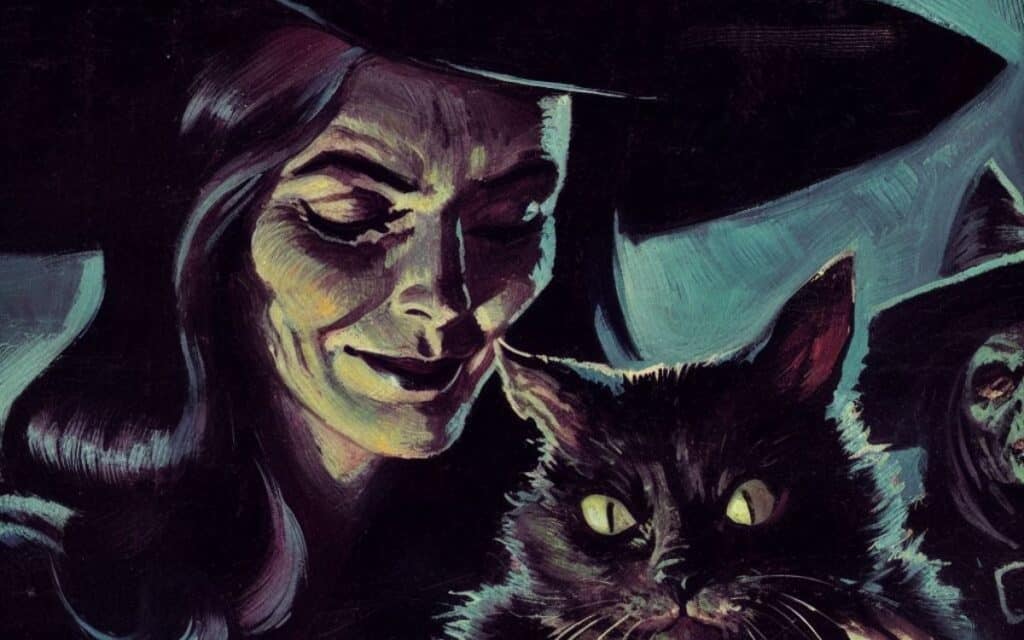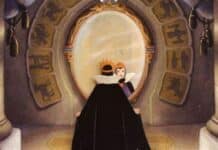Familiars, mystical aides often seen as animals, were central to witchcraft throughout history. HELEN J. R. BRUCE explains their dual roles as agents of harm or healing during England’s witch trials.

During the infamous English witchcraft trials across the 17th and 18th centuries, hundreds of women, men and children were accused of being witches and making deals with the Devil.
During the infamous English witchcraft trials across the 17th and 18th centuries, hundreds of women, men and children were accused of being witches and making deals with the Devil.
Many of the individuals who confessed to witchcraft described in detail how they were aided by their familiar, a lesser demon appearing in animal form.
Popular shapes taken by these familiars included cats, toads, ferrets, mice and dogs, although a Welsh witch by the name of Gwen was believed to be assisted in her curses by an unusually large fly.
A Deal with the Devil
A familiar was no ordinary animal and a witch could only obtain one either from the Devil, or by inheriting it from another witch.
In Cambridgeshire and the Fenlands these creatures were known as ‘imps’ and believed to have a wide variety of supernatural powers, including shape shifting, causing illness in humans and farm animals, turning milk sour and breaking bones.
Agnes Waterhouse, the first woman to be executed in England for witchcraft in 1566, described to her accusers how she had sent her pet cat, named Satan, out to kill and injure multiple people.
There are numerous accounts of witches tasking their familiars with taking revenge on people who had wronged them, often by striking down the individual with a mysterious illness.
Elizabeth Harris, of Faversham in Kent, confessed to being visited by the Devil in the form of a mouse and making a deal, written in her own blood, where the Devil agreed to help her take revenge on her enemies.
Shortly afterwards, a man who had accused her of stealing a pig wasted away and died.
Bloodsucking Imps
What a familiar asked for in exchange for its assistance varied, although during the trials many witches confessed to having their blood sucked.
Elizabeth Sawyer, from Edmonton, described how her familiar came to her in the form of a dog named Tom, and that he sucked her blood for a quarter of an hour without causing her any pain.
Another witch, named Jane Holt, stated in 1645 that a creature like a hedgehog, but with the smooth fur of a cat, had visited her a couple of times a month for the last 20 years and sucked her blood.
The infamous ‘witches mark’ which was sought out during investigations was believed to be the nipple from which a familiar was fed. But blood was not the only offering required. Some familiars, including the canine one of Pendle witch James Device, demanded the soul of the person they served.
Human Familiars
Familiars were not always limited to animal forms, and many could shape shift between various appearances.
Scottish witch, Bessie Dunlop, was tried for witchcraft in 1567 and confessed to consulting an old man named Tom Reid for advice. When the familiar appeared in human form, it was believed to either be a fairy or a ghost.
The Witchfinder General, Matthew Hopkins, recorded the names of many familiars as proof of their existence.
James Device’s dog familiar went by the name of Dandy, which interestingly also appears in Cornish folklore referring to the Devil’s Dandy Dogs.
Elizabeth Southerns, known also as Old Demdike, was jailed as the ringleader of the Pendle witches and freely confessed to having a familiar named Tibbs, who first appeared in the form of a young man and later shifted between a hare, a black cat and a brown dog.
Otherworldly Spirits and Cunning Folk
Familiars were not only used to cause harm, but could also be directed to seek out illness, somewhat similar to the way that dogs are used to sniff out various cancers in the modern day.
Many superstitions surround witches and their familiars, including the belief that a witch cannot die until their familiar has been gifted to another, and that burning a witches familiar will kill the witch.
Both Cunning Men and Cunning Women relied on familiars as otherworldly helpers, and were believed to be unable to curse or cure without them.
Tell us your thoughts on witches’ familiars in the comments section below!







